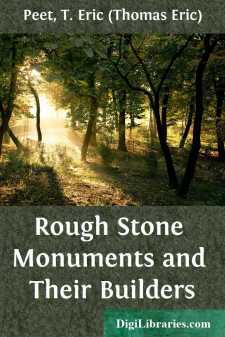Categories
- Antiques & Collectibles 13
- Architecture 36
- Art 48
- Bibles 22
- Biography & Autobiography 813
- Body, Mind & Spirit 142
- Business & Economics 28
- Children's Books 17
- Children's Fiction 14
- Computers 4
- Cooking 94
- Crafts & Hobbies 4
- Drama 346
- Education 46
- Family & Relationships 57
- Fiction 11829
- Games 19
- Gardening 17
- Health & Fitness 34
- History 1377
- House & Home 1
- Humor 147
- Juvenile Fiction 1873
- Juvenile Nonfiction 202
- Language Arts & Disciplines 88
- Law 16
- Literary Collections 686
- Literary Criticism 179
- Mathematics 13
- Medical 41
- Music 40
- Nature 179
- Non-Classifiable 1768
- Performing Arts 7
- Periodicals 1453
- Philosophy 64
- Photography 2
- Poetry 896
- Political Science 203
- Psychology 42
- Reference 154
- Religion 513
- Science 126
- Self-Help 84
- Social Science 81
- Sports & Recreation 34
- Study Aids 3
- Technology & Engineering 59
- Transportation 23
- Travel 463
- True Crime 29
Rough Stone Monuments and Their Builders
Categories:
Description:
Excerpt
ROUGH STONE MONUMENTS
CHAPTER I
To the south of Salisbury Plain, about two miles west of the small country town of Amesbury, lies the great stone circle of Stonehenge. For centuries it has been an object of wonder and admiration, and even to-day it is one of the sights of our country. Perhaps, however, few of those who have heard of Stonehenge or even of those who have visited it are aware that it is but a unit in a vast crowd of megalithic monuments which, in space, extends from the west of Europe to India, and, in time, covers possibly more than a thousand years.
What exactly is a megalithic monument? Strictly speaking, it is a building made of very large stones. This definition would, of course, include numbers of buildings of the present day and of the medieval and classical periods, while many of the Egyptian pyramids and temples would at once suggest themselves as excellent examples of this type of building. The archæologist, however, uses the term in a much more limited sense. He confines it to a series of tombs and buildings constructed in Western Asia, in North Africa, and in certain parts of Europe, towards the end of the neolithic period and during part of the copper and bronze ages which followed it. The structures are usually, though not quite invariably, made of large blocks of unworked or slightly worked stone, and they conform to certain definite types. The best known of these types are as follows: Firstly, the menhir, which is a tall, rough pillar of stone with its base fixed into the earth. Secondly, the trilithon, which consists of a pair of tall stones set at a short distance apart supporting a third stone laid across the top. Thirdly, the dolmen, which is a single slab of stone supported by several others arranged in such a way as to enclose a space or chamber beneath it. Some English writers apply the term cromlech to such a structure, quite incorrectly. Both menhir and dolmen are Breton words, these two types of megalithic monument being particularly frequent in Brittany. Menhir is derived from the Breton men, a stone, and hir, long; similarly dolmen is from dol, a table, and men, a stone. Some archæologists also apply the word dolmen to rectangular chambers roofed with more than one slab. We have carefully avoided this practice, always classing such chambers as corridor-tombs of an elementary type. Fourthly, we have the corridor-tomb (Ganggrab), which usually consists of a chamber entered by a gallery or corridor. In cases where the chamber is no wider than, and hence indistinguishable from the corridor, the tomb becomes a long rectangular gallery, and answers to the French allée couverte in the strict sense. Fifthly, we come to the alignement, in which a series of menhirs is arranged in open lines on some definite system. We shall find a famous example of this at Morbihan in Brittany. Sixthly, there is the cromlech (from crom, curve, and lec'h, a stone), which consists of a number of menhirs arranged to enclose a space, circular, elliptical or, in rare cases, rectangular.
These are the chief types of megalithic monument, but there are others which, though clearly belonging to the same class of structure, show special forms and are more complicated. They are in many cases developments of one or more of the simple types, and will be treated specially in their proper places. Such monuments are the nuraghi of Sardinia and the 'temples' of Malta and Gozo.
Finally, the rock-hewn sepulchre is often classed with the megalithic monuments, and it is therefore frequently mentioned in the following pages. This is justified by the fact that it generally occurs in connection with megalithic structures. The exact relation in which it stands to them will be fully discussed in the last chapter.
We have now to consider what may be called the architectural methods of the megalithic builders, for although in dealing with such primitive monuments it would perhaps be exaggeration to speak of a style, yet there were certain principles which were as carefully and as invariably observed as were in later days those of the Doric or the Gothic styles in the countries where they took root....


